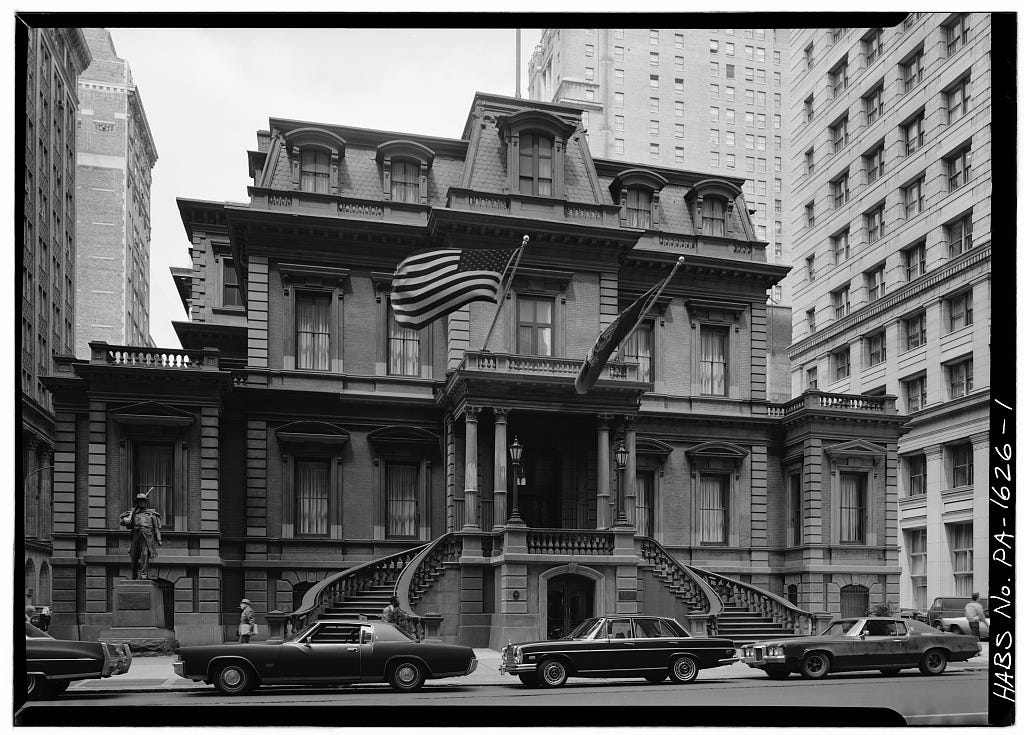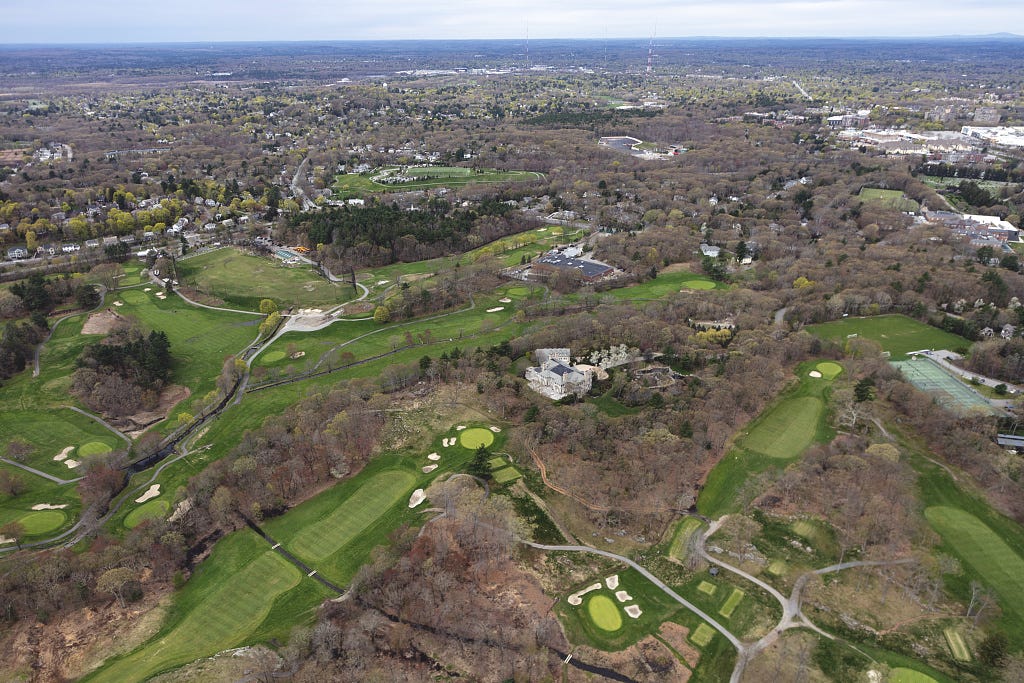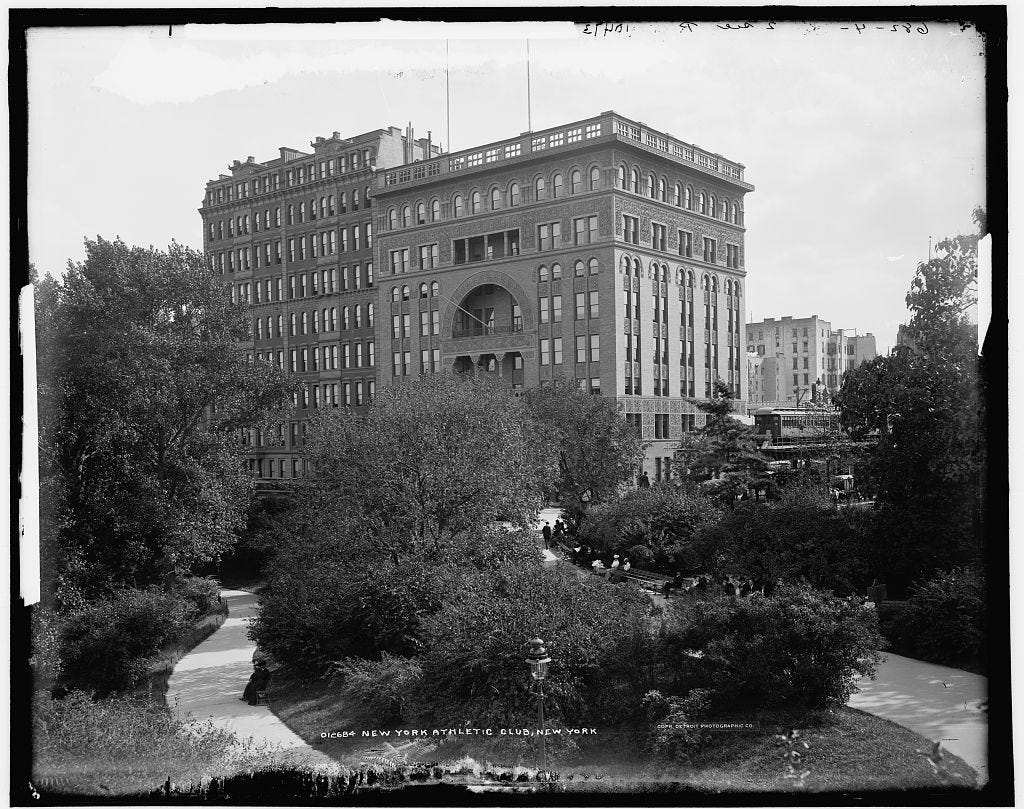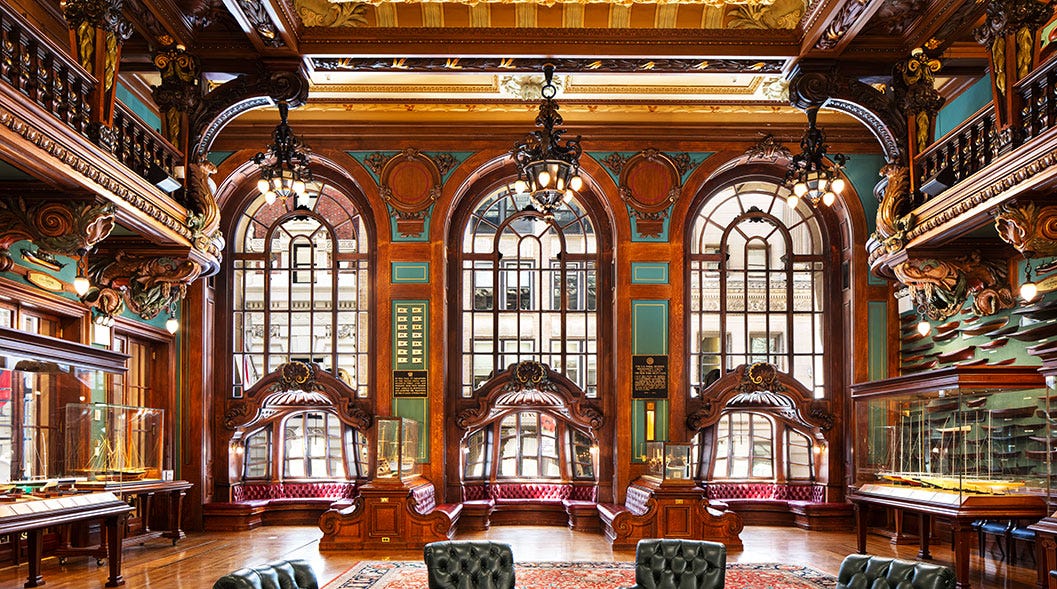Tour de Clubland
A handy guide for distinguishing clubs across Clubland
Anyone who’s spent time in Clubland has heard names that sound awfully similar to each other being thrown around by members. But, what’s the difference between each of them?
New York Yacht Club sounds awfully similar to New York Athletic Club; New Haven Country Club sounds awfully similar to New Haven Lawn Club, even though only the latter has squash courts, if you were wondering. The dizzying array of acronyms can only truly be learnt by making your way through Clubland, but what we, here, at Clubland, can do is introduce you to the various types of clubs commonly found across the United States.
Most clubs within the United States can be categorised as city clubs, country clubs, athletic clubs, and yacht clubs. Many clubs, however, are melanges: the New York Athletic Club, the most storied athletic club in the United States situated in a historic and opulent Central Park South clubhouse, has a Travers Island outpost which functions as a yacht club. The New York Yacht Club’s clubhouse, situated on Clubhouse Row near the Harvard, Penn and Cornell clubs, is roughly seven avenues in either direction from the nearest body of water with a permanent waterfront facility over 100 miles away in Newport, Rhode Island.
City Clubs
The Union League Club of Philadelphia has ranked among the country’s top city clubs in recent years. Image courtesy of the Library of Congress.
City clubs are the sort of clubs you’d expect to regularly visit in formal attire, but the closer you get to them, the more you realise that club staff can barely enforce the no-sneakers rule, forget the sports coats and ties and suits. You know you’ve messed up when you see Pata-Guccis: run, for you are at some modern, private-equity owned impostor like SoHo House and not an actual city club. We haven’t fallen that far.
Clubhouse Rows, or streets lined with clubhouses in close proximity, were once more common across America’s big cities. Some are completely gone while some are smaller than they once were. New York’s Clubhouse Row, the veritable few blocks on 44th Street between Fifth and Sixth Avenues is still going strong.
Large city clubs, such as New York’s University Club and Yale Club and Union Club will have squash courts. Their smaller counterparts, such as Manhattan’s Down Town Association and Boston’s Union Club will not have sports facilities but will offer a fitness center to members.
Another smaller form of city clubs include university clubs, such as the University Club of Santa Barbara, or clubs affiliated with specific universities (usually Ivy Leagues), such as Penn Club of New York and its neighbor, Cornell Club. Interestingly enough, Harvard is the only university to maintain clubhouses in two cities, New York and Boston. These clubs will occasionally have sports facilities, but usually boast food and beverage service, curated events, fitness centers and reasonable overnight accommodations.
Most city clubs owe their origins to thriving downtowns and commonly are referred to as “downtown” or “business clubs” because of their proximity to office spaces. Manhattan’s Club Row, for instance, is conveniently situated within stumbling distance of New York City’s top companies and organizations. City clubs, as a result, tend to draw most of their membership from professionals.
Clubland historians, such as Valerie Capdeville, point to city clubs as the most direct line of transmission from British Clubland, which includes Athenaeum and Carlton, to American Clubland.
As the locus of business activity has moved away from downtown, many city clubs have struggled in the past. These clubs are now experiencing membership growth in membership as young professionals seek pomp and circumstance to punctuate the humdrum of contemporary city life.
Country clubs
An Aerial View of The Country Club, Brookline, MA, the oldest country club in the United States, courtesy of the Library of Congress.
If you’ve ever seen a caricature of club life, it’s most likely a caricature of country club life: of the endless oasis of white and green, bunkers of sand and golfing greens, and obnoxious tales of tipping. Found in the vast expanse of America that is not urban, and a common feature of suburbia’s wealthier enclaves, country clubs come together over golf, though many also include tennis and platform tennis courts, along with swimming pools.
The first country club in the United States was the rather originally named The Country Club, in Brookline, MA, founded in 1882. Originally intended to encourage the pursuit of various “country” activities, from hunting to golf, activities that would be nigh impossible in a city, country clubs are now more conventionally meant to suggest a golf course with a clubhouse and tennis courts and a pool. Of all the clubs mentioned here, country clubs tend to be the most expensive to run, and tend to have by far the highest dues of them all. A squash court only requires so much maintenance; golf courses, on the other hand, are an entirely different matter.
There are, however, remnants of the old country clubs, of country clubs that promote activities outside of golf. Most of these are “hunt clubs” such as the Fairfield County Hunt Club, in Westport, CT, and the Ox Ridge Riding and Racquet Club in Darien, CT. Both these clubs represent strong equestrian backgrounds and will have facilities for members to learn how to traipse around the countryside on horseback with some proficiency. Sadly, there is no fox-hunting to be found, and 1776 killed the ever-so-fashionable redcoats, now relegated solely to the Cotswolds.
Athletic Clubs
A view of the New York Athletic Club clubhouse from Central Park in Manhattan, NY. Courtesy of the Library of Congress.
If you’ve ever met someone obsessed with their squash rating or their USTA, they probably belong to an athletic club. And, when you first see them on court, lifting racquets instead of martinis, you’ll realise that their actual skills are at least two orders of magnitude worse than they were when recounted at the bar.
Athletic Clubs in the United States first made their mark after the Civil War, around 1865, starting as organisations to promote track and field. “Although predated by numerous boat, cricket, baseball, and ethnic clubs such as the Caledonian Society”, J. Willis and R. Wettan observed, “the athletic club movement in the United States in reality began with the founding of the New York A.C. [Athletic Club] in 1866”.
By the 1880s, however, Willis and Wettan note, these clubs began taking on the airs of social clubs, building elaborate clubhouses and developing facilities for maintaining social bonds off court and off arena. The modern athletic club is a social club first and foremost, and a place to pursue athletic excellence second: as much as the New York Athletic Club or the New Haven Lawn Club would like to point to their state-of-the-art squash and tennis courts, make no mistake, for they are only for members.
Athletic Clubs, especially in cities, are the locus of squash in the United States, and have produced some of the country’s best squash players. Many of them also have tennis courts and gyms, but their focal point is almost always the bar and the locker room.
The foremost athletic club in the United States has historically also been the first—the New York Athletic Club.
Yacht Clubs
The New York Yacht Club’s Manhattan Clubhouse. Not much sailing goes on on the Chesterfields. Courtesy of New York Yacht Club
Perhaps unintentionally the most secretive part of Clubland, no one really knows what happens at yacht clubs—sometimes, not even the members themselves. I happen to know three yacht club members; none of them know how to sail. One of them is even aquaphobic. That is apparently par for the course.
The oldest yacht club in the United States is the New York Yacht Club, which was founded in 1844. According to the American Sailing Association, soon after the New York Yacht Club was formed, it commissioned a yacht—a pilot schooner aptly named America—which was sailed across the Atlantic and challenged her British counterparts at the Hundred Guinea Cup, which was renamed to reflect the winner, and known probably to you as the America Cup. The NYYC successfully defended the trophy for almost a century and a quarter, from 1870 onwards.
Yacht clubs tend to have their own world and their own hierarchy, set up like a naval squadron, with a commodore—akin to a club manager or president—and a vice-commodore and rear commodore for land- and sea-based operations, respectively. Most members of yacht clubs will claim that only prowess in sailing counts for anything here. This is not true and rather, like most clubs, both the key to membership and the heart of the engine is always social, while sports might serve to lubricate the machinery. While some yacht clubs have elaborate clubhouses and marinas, on the other hand, some are staging points for flotalia, and most clubs span the gamut between them.
Not all clubs, and, consequently, club rats, are created equal; some are intrinsically better than others. We’ve excluded the gauche, the trend-setting, and the innovative at all costs from this lay of Clubland.
Much ground remains to be tread, and I am thereby your Phileas Fogg, venturing out from my Reform to seek a new adventure across the world of America’s clubs.




